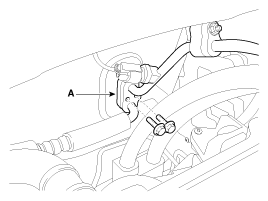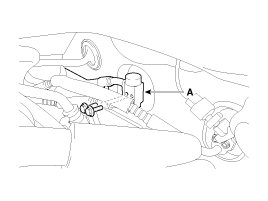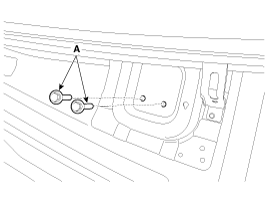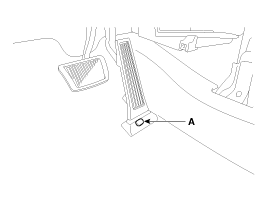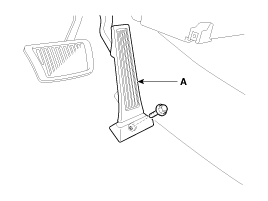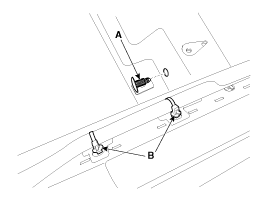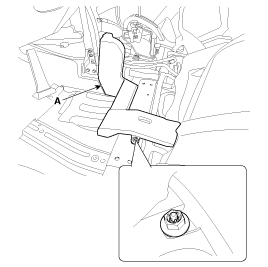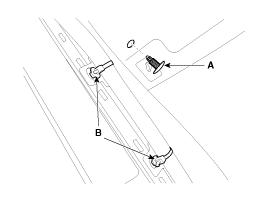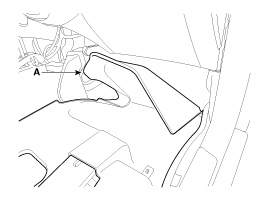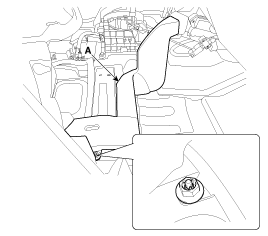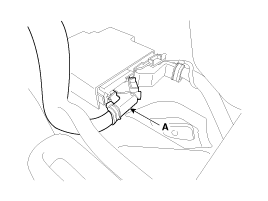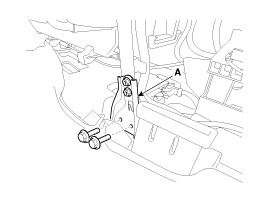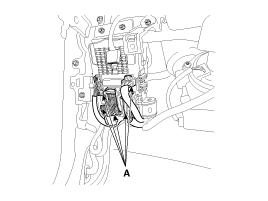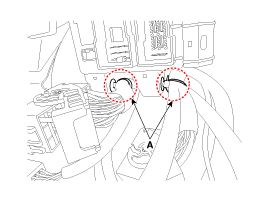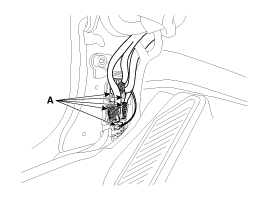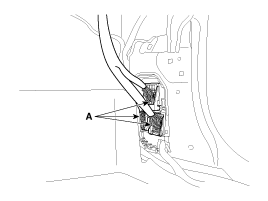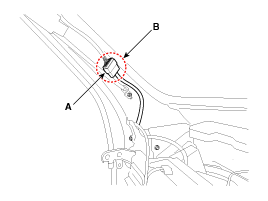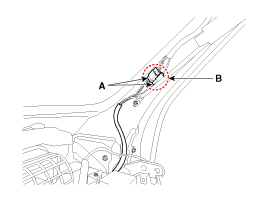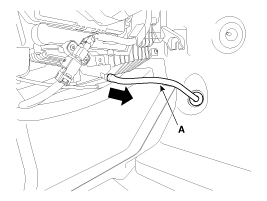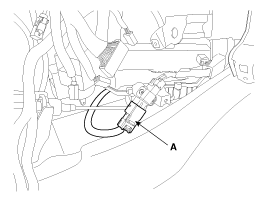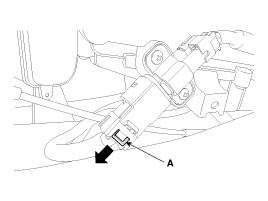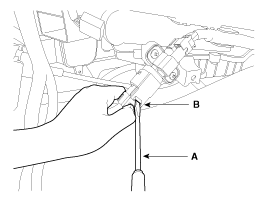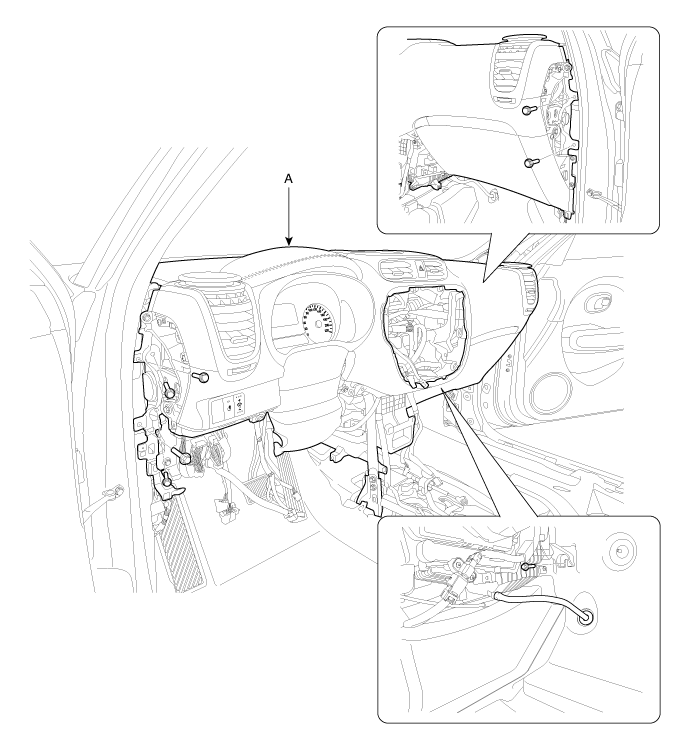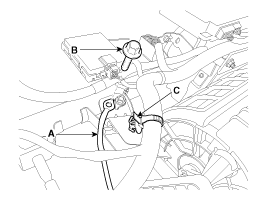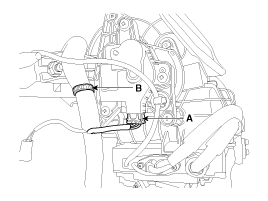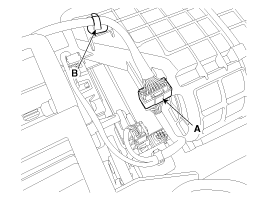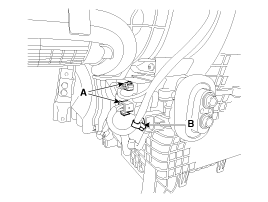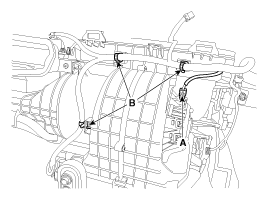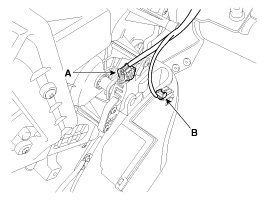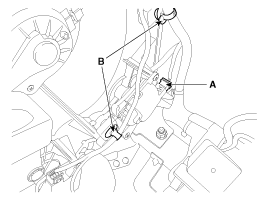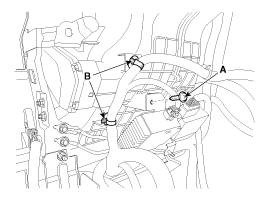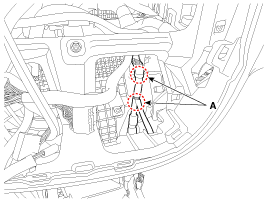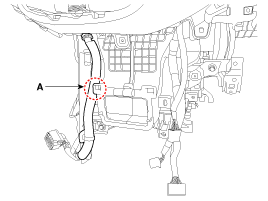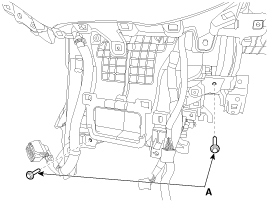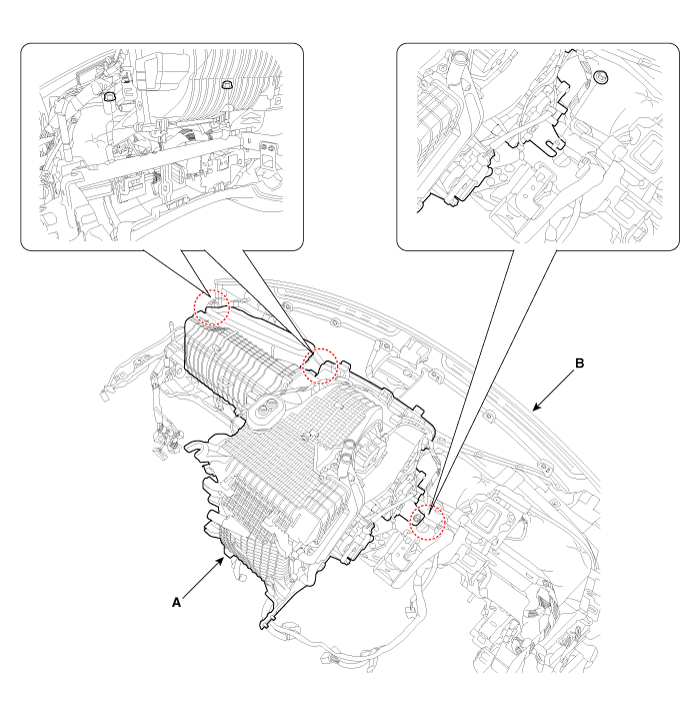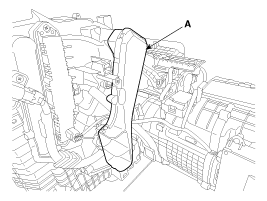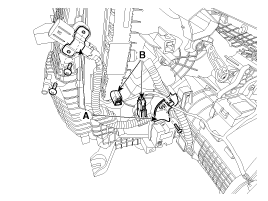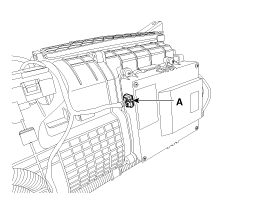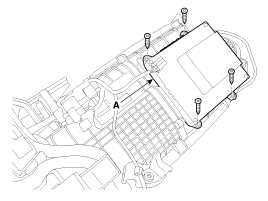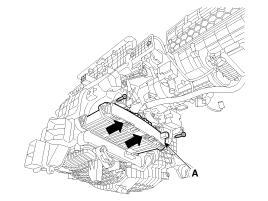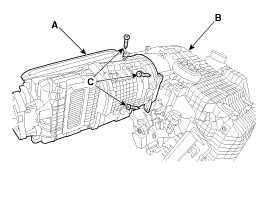Kia Soul EV: Heater / Heater Unit Repair procedures
Kia Soul EV (PS EV) 2015-2020 Service Manual / Heating,Ventilation, Air Conditioning / Heater / Heater Unit Repair procedures
| Replacement |
|
|
|
| 1. |
Recover the refrigerant with a recovery/ recycling/ charging station.
|
| 2. |
Disconnect the negative (-) battery terminal. |
| 3. |
Shut off the high voltage circuit.
(Refer to EV Battery System - "High Voltage Shut-off Procedure") |
| 4. |
Remove the cowl top cover.
(Refer to Body - "Cowl Top Cover") |
| 5. |
Remove the pipe (A) after loosening the mounting bolts.
|
| 6. |
Remove the expansion valve (A) after loosening the mounting bolts from the evaporator core.
|
| 7. |
Loosen the cowl cross member mounting bolts (A).
|
| 8. |
Remove both sides of front seat assembly.
(Refer to Body - "Front Seat Assembly") |
| 9. |
Remove the floor console assembly.
(Refer to Body - "Floor Console Assembly") |
| 10. |
Remove the crash pad lower panel.
(Refer to Body - "Crash Pad Lower Panel") |
| 11. |
Remove the glove box housing.
(Refer to Body - "Glove Box Housing") |
| 12. |
Remove the crash pad center panel.
(Refer to Body - "Crash Pad Center Panel") |
| 13. |
Remove both sides of the front pillar trim.
(Refer to Body - "Front Pillar Trim") |
| 14. |
Remove both sides of the cowl side trim.
(Refer to Body - "Cowl Side Trim") |
| 15. |
Remove the steering column shroud lower panel.
(Refer to Body - "Steering Column Shroud Panel") |
| 16. |
Remove the steering wheel.
(Refer to Steering System - "Steering Wheel") |
| 17. |
Remove the multifunction switch.
(Refer to Body Electrical System - "Multifunction Switch") |
| 18. |
Lower the steering column after loosening the mounting bolts.
(Refer to Steering System - "Steering Column and Shaft") |
| 19. |
Remove the rear airduct assembly (A).
[LH]
|
| 20. |
Remove the shift lever assembly.
(Refer to Automatic Transaxle System - "Shift Lever") |
| 21. |
Disconnect the airbag control module (SRSCM) connector (A).
|
| 22. |
After loosening the mounting bolts and nuts, remove the cowl cross bar center bracket (A).
|
| 23. |
Disconnect the passenger compartment junction box connectors (A).
|
| 24. |
Remove the passenger compartment junction box mounting clips (A).
|
| 25. |
Disconnect the multi box connectors (A).
[Driver''s]
[Passenger''s]
|
| 26. |
Disconnect the connector (A) and the mounting clips (B) in the front pillar.
[Driver''s]
[Passenger''s]
|
| 27. |
Remove the drain hose (A).
|
| 28. |
Disconnect the high voltage PTC heater cable (A).
|
| 29. |
After loosening the bolts, remove the main crash pad and cowl cross bar assembly (A) altogether.
|
| 30. |
Disconnect the heater and blower unit connectors.
|
| 31. |
Remove the mounting clips (A).
|
| 32. |
Loosen the heater and blower unit mounting bolts (A).
|
| 33. |
Remove the heater and blower unit (A) from the crash pad (B) after loosening the mounting nuts.
|
| 34. |
Remove the air duct (A) after loosening the mounting screw.
|
| 35. |
Disconnect the connector (B).
And then remove the high voltage line guide (A) after loosening the mounting screws.
|
| 36. |
Disconnect the high voltage PTC heater unit connector (A).
|
| 37. |
Remove the high voltage PTC heater unit (A) after loosening the mounting screws.
|
| 38. |
Remove the high voltage PTC heater core (A) after loosening the mounting screws.
|
| 39. |
Separate the blower unit (A) from the heater unit (B) after loosening the mounting screws (C).
|
| 40. |
Install in the reverse order of removal and note the followings:
|
 Heater Unit Components and Components Location
Heater Unit Components and Components Location
Component Location
1. Heater unit
Components
[LH]
1. Floor shower duct assembly [LH]2. Duct sensor3. Interior condenser cover4. Heater core cover5. Temp door arm6. Temp door lever7. Temp ...
 Evaporator Core Repair procedures
Evaporator Core Repair procedures
Replacement
•
Be sure to read and follow the “General Safety Information
and Caution” before doing any work related with the high voltage
system. Failu ...
Other information:
Kia Soul EV (PS EV) 2015-2020 Service Manual: Inspection
Inspection When removing the battery pack assembly to inspect the battery system, it can be connected to vehicle by using the SST 0K918-E4100, 0K375-E4100, 0K375-E4200. Before installing the battery system assembly, check if the battery is OK by using the SST. ...
Kia Soul EV (PS EV) 2015-2020 Service Manual: Front Stabilizer Link Repair procedures
Replacement 1. Loosen the wheel nuts slightly. Raise the vehicle, and make sure it is securely supported. 2. Remove the front wheel and tire (A) from front hub. Tightening torque : 88.3 ~ 107.9N.m (9.0 ~ 11.0kgf.m, 65.1 ~ 79.6lb-ft) • Be careful ...
Copyright © www.ksoulev.com 2020-2025





